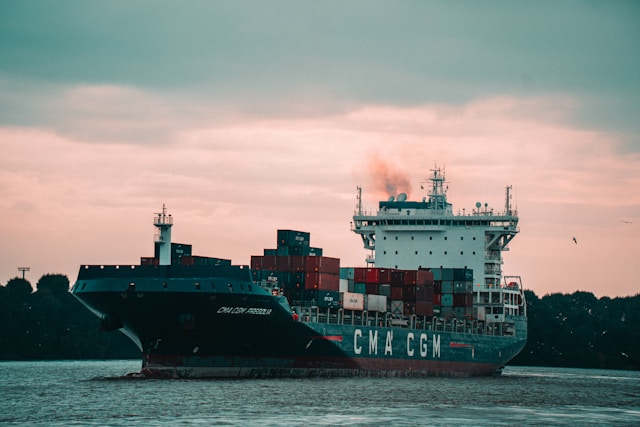A supply chain encompasses all the steps to get a product or service from its initial conception to the end consumer. This includes producing, handling, storing, and distributing goods and services. It involves multiple entities, including suppliers, manufacturers, distributors, retailers, and customers. Here’s an overview of the critical components and processes within a supply chain:
Components of a Supply Chain
- Suppliers: These are the entities that provide raw materials or components to manufacturers. They play a crucial role in the supply chain by determining the quality and availability of the finished product.
- Manufacturers: Manufacturers transform raw materials supplied by vendors into finished goods. Their operations can significantly affect production costs and product quality.
- Warehouses: Warehousing involves the storage of goods until they are needed. Effective warehousing ensures that products are kept safe and distributed efficiently to meet consumer demand.
- Distribution Centers: These facilities manage product distribution directly to retailers or consumers. Efficient distribution centers are vital for minimizing transportation costs and delivery times.
- Retailers: Retailers are the final step in the supply chain before products reach consumers. They must manage inventory and customer relations effectively to ensure consumer satisfaction and repeat business.
- Customers: Ultimately, the supply chain is driven by consumer demand. Understanding customer needs and behaviors can help optimize the supply chain to improve service and reduce costs.
Key Processes
- Procurement: Procuring quality raw materials at the best prices is crucial for maintaining profitability.
- Production: Efficient production processes are necessary to maximize output and reduce waste.
- Inventory Management: Proper inventory management helps in balancing supply and demand, reducing excess stock, and minimizing shortages.
- Logistics: Effective logistics involve managing the transportation and distribution of goods in a timely and cost-efficient manner.
- Information Management: Advanced information systems are used to track products and coordinate operations across the supply chain.
Here is the SWOT analysis of a Supply Chain
A SWOT analysis is a strategic planning tool used to evaluate a business, project, or individual’s strengths, weaknesses, opportunities, and threats. It involves identifying the internal and external factors that can affect a venture’s success or failure and analyzing them to develop a strategic plan. In this article, we do a SWOT Analysis of a Supply Chain.
SWOT Analysis: Meaning, Importance, and Examples
Strengths
- Efficiency: A well-optimized supply chain is characterized by streamlined operations that minimize waste and redundancy while maximizing productivity. This efficiency can lead to lower operational costs and faster production cycles, ultimately enhancing customer satisfaction by ensuring products are available when and where needed.
- Agility: The ability to quickly respond to changes in the market environment, whether they are shifts in consumer demand, disruptions in supply, or changes in regulations, is a critical strength. Agile supply chains can adapt their strategies and operations swiftly, preventing losses and capitalizing on opportunities.
- Integration: Strong information technology systems integration across the supply chain allows for seamless communication and data exchange among all stakeholders. This integration provides accurate and timely information, facilitating effective decision-making and improving responsiveness.
- Collaboration: Effective supply chains are often the result of robust collaboration among all parties involved, from suppliers to customers. Good collaboration enhances trust and transparency, leading to better coordination, reduced conflicts, and more aligned goals across the supply chain.
- Supply Chain Visibility: Having comprehensive visibility across the supply chain, including insight into operations at suppliers, in transit, and at customer sites, strengthens the ability to manage and optimize operations. Visibility helps in proactive decision-making and risk management by identifying potential disruptions early and enabling quick responses.
- Sustainability: Modern supply chains prioritizing sustainability by adopting eco-friendly practices and striving for social responsibility gain competitive advantages. Sustainable practices not only comply with increasing regulatory pressures but also resonate with environmentally conscious consumers and can lead to cost savings, for example, through reduced waste and improved resource efficiency.
Weaknesses
- Complexity: As supply chains expand globally, they become more complex. This complexity can lead to difficulties in management and coordination, increased costs, and delays. The more stages there are in the supply chain, the harder it is to maintain control and ensure smooth operations.
- Dependency on Key Suppliers: Over-reliance on specific suppliers can be risky, especially if those suppliers face disruptions due to issues such as financial instability, natural disasters, or political unrest. This dependency can create bottlenecks and halt production, impacting the entire supply chain.
- Inadequate Risk Management: Supply chains often lack robust risk management strategies that can handle unexpected disruptions. Without effective risk management, a single point of failure can have cascading effects, severely impacting operations.
- Limited Flexibility: Some supply chains struggle with inflexibility, making it difficult to adjust quickly to changes in demand or supply conditions. This lack of agility can lead to inefficiencies, such as excess inventory or insufficient products to meet market demand.
- Technological Challenges: While technology can greatly enhance supply chain operations, integrating new technologies can also be challenging. Inadequate IT infrastructure or resistance to adopting new technologies can hinder a supply chain’s ability to improve efficiency and adapt to new market conditions.
- Regulatory Compliance: Compliance with international, national, and local regulations can be complex and costly. Regulatory changes can necessitate adjustments in supply chain processes, and failure to comply can result in fines, legal issues, and damage to reputation.
- Environmental and Social Issues: Environmental sustainability and social responsibility are increasingly important in supply chain management. Failures in these areas can lead to reputational damage and regulatory penalties. Additionally, unsustainable practices can lead to resource depletion and increased costs in the long term.
Opportunities
- Technological Advancements: The continued development and integration of technologies like blockchain, IoT (Internet of Things), AI (Artificial Intelligence), and advanced analytics offer significant opportunities. These technologies can improve supply chain operations’ transparency, tracking, efficiency, and responsiveness.
- Global Market Expansion: As businesses continue to globalize, supply chains have increased opportunities to expand into new markets. This expansion requires adapting supply chain strategies to meet diverse consumer demands and regulatory environments, providing a chance to capture new customer bases.
- Sustainability and Circular Economy: There is a growing demand for sustainable practices and the development of circular economies. Supply chains can innovate in areas such as recycling, waste reduction, and using renewable resources. These practices help reduce environmental impact, resonate with increasingly eco-conscious consumers, and can lead to cost savings.
- E-commerce Growth: The surge in e-commerce has been a significant driver for the evolution of supply chains. This trend offers opportunities for supply chains to develop more robust e-fulfillment strategies and last-mile delivery solutions to meet the rising demand for faster and more reliable online shopping deliveries.
- Supply Chain Diversification: The recent disruptions highlighted the risks of over-dependence on single sources and geographies. There is an opportunity to diversify supply sources and logistics strategies to enhance resilience against global disruptions such as pandemics and trade conflicts.
- Enhanced Collaboration: By improving collaboration between different players within the supply chain, companies can enhance information flow and synchronization of actions, leading to better inventory management, reduced costs, and improved service levels.
- Customization and Personalization: As consumer preferences continue to shift towards personalized products and services, supply chains can innovate in customization. This can involve developing capabilities to efficiently handle smaller, more customized production runs.
Threats
- Geopolitical Tensions and Trade Disputes: Changes in trade policies, tariffs, and international relations can lead to significant disruptions in global supply chains. Geopolitical tensions can restrict access to specific markets, increase costs, or abruptly compel businesses to alter their supply chain strategies.
- Natural Disasters and Climate Change: Events such as hurricanes, earthquakes, and floods can severely disrupt production facilities, transportation, and logistics networks. Climate change exacerbates these risks, potentially leading to more frequent and severe weather events that can interrupt supply chain operations.
- Cybersecurity Threats: As supply chains become increasingly digitized, they become more vulnerable to cyber-attacks. These can range from data breaches exposing sensitive information to ransomware attacks that can shut down operations.
- Supplier Reliability and Quality Issues: Dependency on a limited number of suppliers can be risky if those suppliers fail to deliver goods of the required quality on time. Supplier failures can be due to financial instability, quality declines, or production disruptions.
- Regulatory Changes: Compliance with international, national, and local regulations is a continuous challenge. New or changing regulations regarding environmental standards, product safety, and labor laws can affect supply chain operations and necessitate costly adjustments.
- Technological Disruptions: While technological advances offer opportunities, they also pose threats. Organizations slow to adopt new technologies may find themselves at a competitive disadvantage. Additionally, investing in new technologies can be costly and come with a risk of obsolescence.
- Economic Uncertainty: Economic downturns affect consumer spending and can lead to a sudden drop in demand. Conversely, rapid economic upturns can strain supply chains unprepared for sudden increases in demand.









